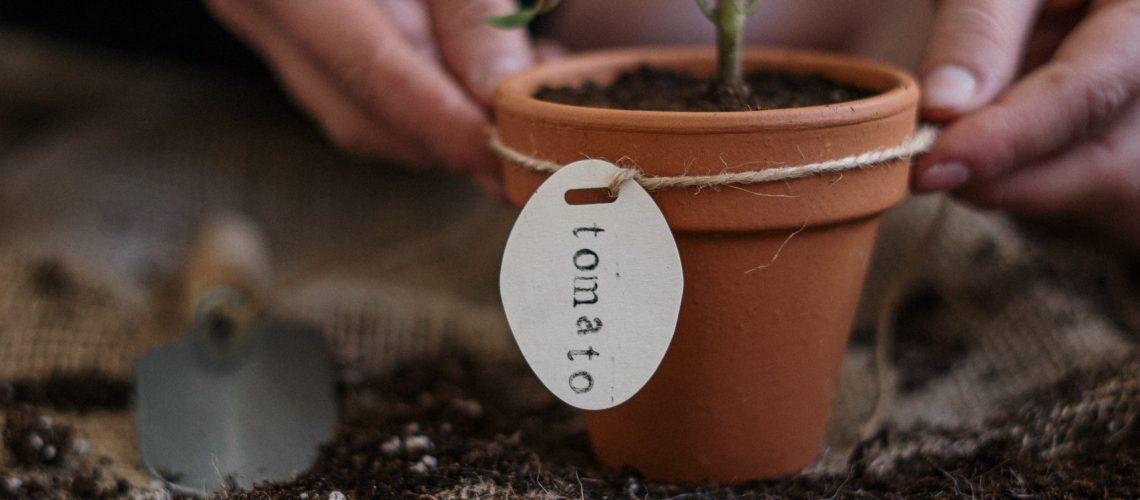As the days get longer and the temperatures rise (hopefully) many people may be getting ready to head out into the outdoors and revamp their gardens, it is one of the most rewarding things you can do with your time!
Be it planting flagrant florals or even starting your own vegetable patch, there’s something for everyone – If you’re starting from scratch however it can be difficult to know where to even begin – Here at Atkins HQ we’ve compiled some easy tips on how to start your first project and ensure you’re doing the best garden care possible.
Step 1 – Know what you’re planting.
Do you want to go green friendly and plant a vegetable garden? Add colour to your patch with a flower bed? How about a handy herb garden? If you’re going for veg, ensure you’re picking greens that you and your family will actually consume, or at least willing to try. If you head down the flower route, you’ll have to choose between perennials that have a shorter bloom time that returns year after year or annuals that will bloom for most of the Summer but need to be replanted in the Spring. Our advice is to start small until you really get comfortable with what you’re doing.
Step 2 – Pick the right spot
Did you know that most plants & veg need about 6-8 hours of sunlight a day? There’s no point in investing time, money and effort into planting your dream garden in a shady spot at the gable of your home. Observe your surroundings throughout the day and note which spots receive full sunlight. If your garden is particularly shady don’t worry, you’ll still be able to grown plants like ferns and hostas.
Step 3 – Clear the Area & Treat your Soil
Before doing anything be sure to clear your chosen area of weeds and debris. You’re going to have to check out what condition your soil is in, factors like the pH level of the soil is going to have an impact on what you grow so be sure to test the levels. Most soil is going to need a boost to ensure good results, it may be low in essential plant nutrients but in addition there could also be drainage or compaction issues. To circumvent this, put down a 2-3 inch layer of compost to the soil when you’re digging it up. If you decide to not dig up the area before planting you can leave some organic matter on the surface like leaves, manure or grass cuttings which will eventually rot into humus, then you’ll have some assistance from the earthworms who will do most of the work mixing the humus in with the subsoil.
Step 4 – Prepare the Area for Planting
To make life easier for yourself, loosen the soil before sowing or planting. By doing so you’re allowing the new roots to grow easier and access the vital soil nutrients and water they need. For small scale projects you’re better off digging by hand as it is easy to overdo it with machinery which can end up damaging the soil structure.
Step 5 – Assemble your plants
At Atkins HQ we’ve got a great selection for you to choose from. You can browse our Garden Section our pop into our Garden Centre in Cork. Our advice is to always pick plants that are suited to your climate, soil type and the amount of sunlight you get. For beginners, we recommend starting with some greenery that isn’t too high maintenance, like geraniums, pansies, or even lettuce, peppers or tomatoes.
Step 7 – Start Planting!
Annuals are probably the easiest plant to grow from seed sown directly into the garden. Always ensure you read the packaging however, for information on depth, spacing and planting time. If you want to take things easier if it is your first time you can always try and purchase a young plant, called sets or transplants.
Step 8 – Water efficiently.
Make sure you’re not letting your seedlings dry out, water them daily and taper off as plants get larger. It’s important to note that transplants need frequent watering until their roots become established, from that point forward it depends on a list of factors as to when you water your plants, including soil, humidity, rainfall. Once a week is a good place to start. A handy tip is to feel the soil 3-4 inches below the surface, if it feels dry, time to water.
Step 9 – Protect your Garden
You’ll want to be keeping moisture in and weeds out, so you’ll have to coat your soil with a couple of inches of mulch. This means you won’t have to water as often and will also prevent nasty weeds springing up as they mulch will prevent sunlight from hitting the soil.
Step 10 – Maintenance is Key
As your garden begins to grow you’ll have to grow with it and keep on top of things. Make sure you’re watering plants before they wither away and remove weeds before they spread. Another top-tip is to harvest your vegetables as soon as they’re ready, don’t take any chances! Find all you need and more for your garden at Atkins.
Atkins supply Ireland from their Cork hub, with free shipping on boxed orders over €60. Bringing you the very best from Husqvarna, Weber and Briggs & Stratton, Atkins have been serving the people of Cork and beyond from 1878, so whether you need garden fencing, power washer, outdoor heater, wheelbarrow or anything in between, Atkins.ie has you covered. Please Visit Atkins.ie to see our full range of Garden Care Products, Robotic Lawn Mowers, Garden Furniture and more.
Find out more about Atkins Farm & Garden Machinery, visit their Profile on WhatsWhat.ie
https://whatswhat.ie/atkins-farm-garden-machinery




